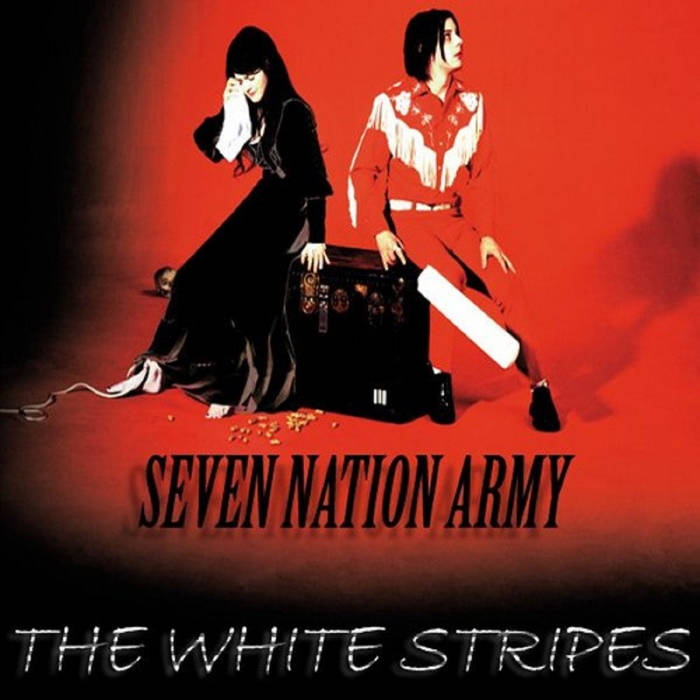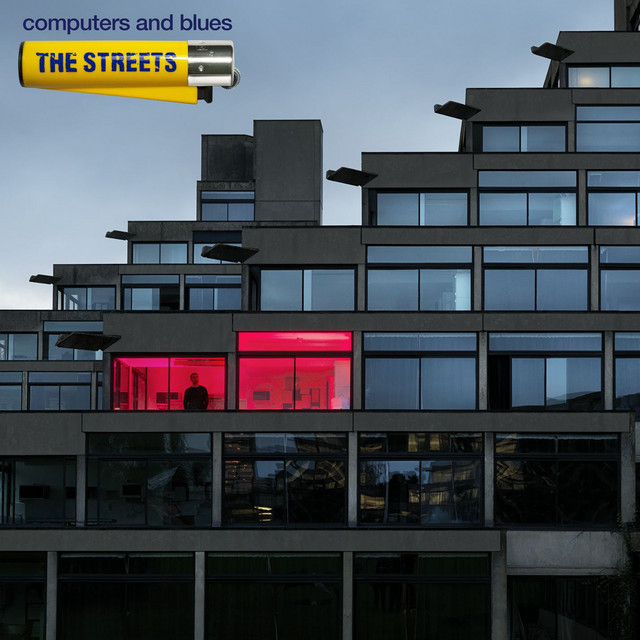 “I Gotta Feeling” by the Black Eyed Peas is more than just a pop song — it’s a cultural phenomenon, a sonic time capsule of late-2000s optimism, and perhaps the most definitive party anthem of its generation. When it was released in 2009, the world was in a strange place: economic uncertainty loomed after the financial crisis, technology was rapidly changing the way people interacted with music, and dance-pop was taking over the charts. In this moment of transition and tension, the Black Eyed Peas delivered a song that was pure escape — a euphoric declaration that no matter what, tonight was going to be a good night.
“I Gotta Feeling” by the Black Eyed Peas is more than just a pop song — it’s a cultural phenomenon, a sonic time capsule of late-2000s optimism, and perhaps the most definitive party anthem of its generation. When it was released in 2009, the world was in a strange place: economic uncertainty loomed after the financial crisis, technology was rapidly changing the way people interacted with music, and dance-pop was taking over the charts. In this moment of transition and tension, the Black Eyed Peas delivered a song that was pure escape — a euphoric declaration that no matter what, tonight was going to be a good night.
From the very first bars of “I Gotta Feeling,” the tone is clear. A bright, repeating chord progression on the synthesizer leads into will.i.am’s robotic yet infectious vocal line: “I gotta feeling… that tonight’s gonna be a good night.” It’s not a deep lyric. It doesn’t need to be. It’s a mantra, a rallying cry, a promise. It’s the kind of line that seeps into your subconscious, that feels like something you’ve always known. The genius of the song lies in its simplicity. It’s a song for everyone — for the teenager heading to their first big party, the college student celebrating graduation, the newlyweds dancing at their reception, or the friends piling into a car on a Friday night with the windows down and the volume up.
The production on “I Gotta Feeling” is sleek, futuristic, and masterfully engineered for mass appeal. It was produced by David Guetta, the French DJ who helped usher in the EDM explosion in the United States, and this collaboration marked a turning point not just for the Black Eyed Peas, but for pop music as a whole. With Guetta’s pulsing electronic beats layered beneath the group’s trademark mix of hip-hop, R&B, and pop, “I Gotta Feeling” became a bridge between radio-friendly pop and dance floor anthems. The track swells and builds like a DJ set, using repetition and layering to create emotional momentum. It’s crafted to be played loud — in clubs, at weddings, in stadiums — anywhere people gather to celebrate.
Vocally, each member of the group brings their unique energy to the track. will.i.am’s computerized vocals set the tone, Fergie provides melodic hooks and charisma, apl.de.ap and Taboo add texture and rhythm, and together they form a perfect quartet of energy. The chorus is delivered with a sense of pure, unfiltered joy. When the group chants, “Let’s live it up / I got my money / Let’s spend it up,” it doesn’t feel like mindless indulgence — it feels like an affirmation of life. The lyrics invite the listener to let go, to seize the night, to forget the stress and just dance. It’s an invitation to collective release, and people responded to it in droves.
“I Gotta Feeling” was the second single from the Black Eyed Peas’ album The E.N.D., following their earlier 2009 smash “Boom Boom Pow.” Whereas “Boom Boom Pow” was more aggressive and futuristic, “I Gotta Feeling” was welcoming and communal. It became an instant hit, debuting at number two on the Billboard Hot 100 and then ascending to number one, where it stayed for an astounding 14 weeks. It was the longest-running number-one song of 2009 and one of the longest chart-toppers of the 2000s. It also made the Black Eyed Peas only the second act in history (after Usher) to replace themselves at number one when “I Gotta Feeling” took over from “Boom Boom Pow.” That back-to-back dominance was a testament to the group’s moment in the pop culture spotlight.
But what truly set “I Gotta Feeling” apart was not just its chart performance — it was its ubiquity. This song was everywhere. It was played at every party, every wedding, every graduation, every New Year’s Eve countdown. It became the unofficial theme song of a thousand milestone moments. People played it as they got ready for nights out, as they toasted to new beginnings, as they danced under string lights and strobe lights alike. Its chorus was quoted in yearbooks, scribbled on notes, captioned on Facebook posts. It transcended genre, age, and geography.
Part of what made the song so powerful was its perfect timing. The late 2000s and early 2010s were a time when pop music was shifting. The dominance of hip-hop and R&B in the early part of the decade gave way to the dance-pop renaissance. Artists like Lady Gaga, Rihanna, Pitbull, LMFAO, and Kesha were blending pop vocals with EDM beats, and the world was eating it up. “I Gotta Feeling” was one of the first and most successful songs to define this crossover. It helped normalize the idea of DJs as pop producers and laid the groundwork for the mainstreaming of electronic dance music in the U.S.
More importantly, “I Gotta Feeling” captured the emotional climate of the time. In the wake of the global financial collapse, there was a hunger for optimism. People wanted to believe that things would get better — or at least, that tonight could be an escape from their problems. The song offered that in spades. It didn’t dwell on sorrow or complexity. It pushed everything else to the background and focused on one simple truth: we need joy. We need each other. We need to dance.
Even critics who might have rolled their eyes at the song’s lyrical simplicity couldn’t deny its effectiveness. It’s nearly impossible to listen to “I Gotta Feeling” and not feel lifted. Its tempo, major key, and group vocals are engineered to trigger feelings of togetherness and euphoria. This isn’t high art — it’s high energy, high spirits, high volume. And that’s exactly what made it perfect.
The Black Eyed Peas themselves were perfectly positioned for this moment. They were already a well-established group with roots in underground hip-hop and had evolved over the years into a global pop juggernaut. With Fergie joining in the early 2000s, their sound became more melodic and commercial, leading to hits like “Where Is the Love?”, “Let’s Get It Started,” and “My Humps.” But The E.N.D. was their boldest reinvention, embracing digital culture and electronic sounds in a way that kept them ahead of the curve. “I Gotta Feeling” was the crown jewel of that reinvention, a song that seemed to crystallize everything the band had become: fun, fearless, and universal.
The cultural reach of “I Gotta Feeling” extended far beyond music charts. It was featured in movies, television shows, commercials, sporting events, and political rallies. It was used by President Obama at campaign events, it blasted from arena speakers during NBA and NFL games, and it even served as a kind of anthem during the 2010 FIFA World Cup celebrations. It became shorthand for “good times,” a song that could instantly summon a mood of celebration with just a few opening notes.
Over time, “I Gotta Feeling” also became the subject of parody and meme culture. Its chorus was quoted, remixed, and spoofed by comedians, YouTubers, and internet personalities. While some of this attention was tongue-in-cheek, it also served to reinforce the song’s deep penetration into popular culture. When a song becomes so familiar that it can be parodied without losing its power, it’s achieved a kind of immortality.
Of course, no song stays at the cultural center forever. By the mid-2010s, the musical landscape had changed again, with darker and moodier tones becoming more dominant in pop. “I Gotta Feeling” began to feel like a relic of a more innocent, carefree time. But rather than fade into obscurity, it took on a new life as a nostalgic classic. People who were teenagers or young adults in 2009 look back on the song with affection. It reminds them of moments that mattered — parties, friendships, first loves, freedom. It transports them to a time when the future felt wide open and anything was possible.
In this way, “I Gotta Feeling” shares something in common with other timeless anthems like Journey’s “Don’t Stop Believin’” or Whitney Houston’s “I Wanna Dance with Somebody.” It’s not about perfection; it’s about connection. It’s about the shared human desire to feel good, to dance, to believe that something magical could happen when the lights go down and the music turns up.
Today, the song continues to thrive. It’s still played at parties and weddings, still used in commercials, still popping up on playlists called “Good Vibes” or “Ultimate Party Mix.” It’s become an evergreen hit — a track that will outlive trends and always be welcomed with open arms and raised hands. It’s hard to imagine a time when a group of friends won’t scream-sing the chorus at 1 a.m. on a dance floor somewhere.
“I Gotta Feeling” was more than a hit for the Black Eyed Peas — it was a moment. A moment that stretched across borders, generations, and contexts. It gave people a reason to smile, to move, to shout. And in the end, that might be the most profound thing any song can do. It may not be poetry. It may not be deep. But when the beat drops and the chorus hits, none of that matters.
Because for just a few minutes, you really do believe that tonight’s gonna be a good night.


